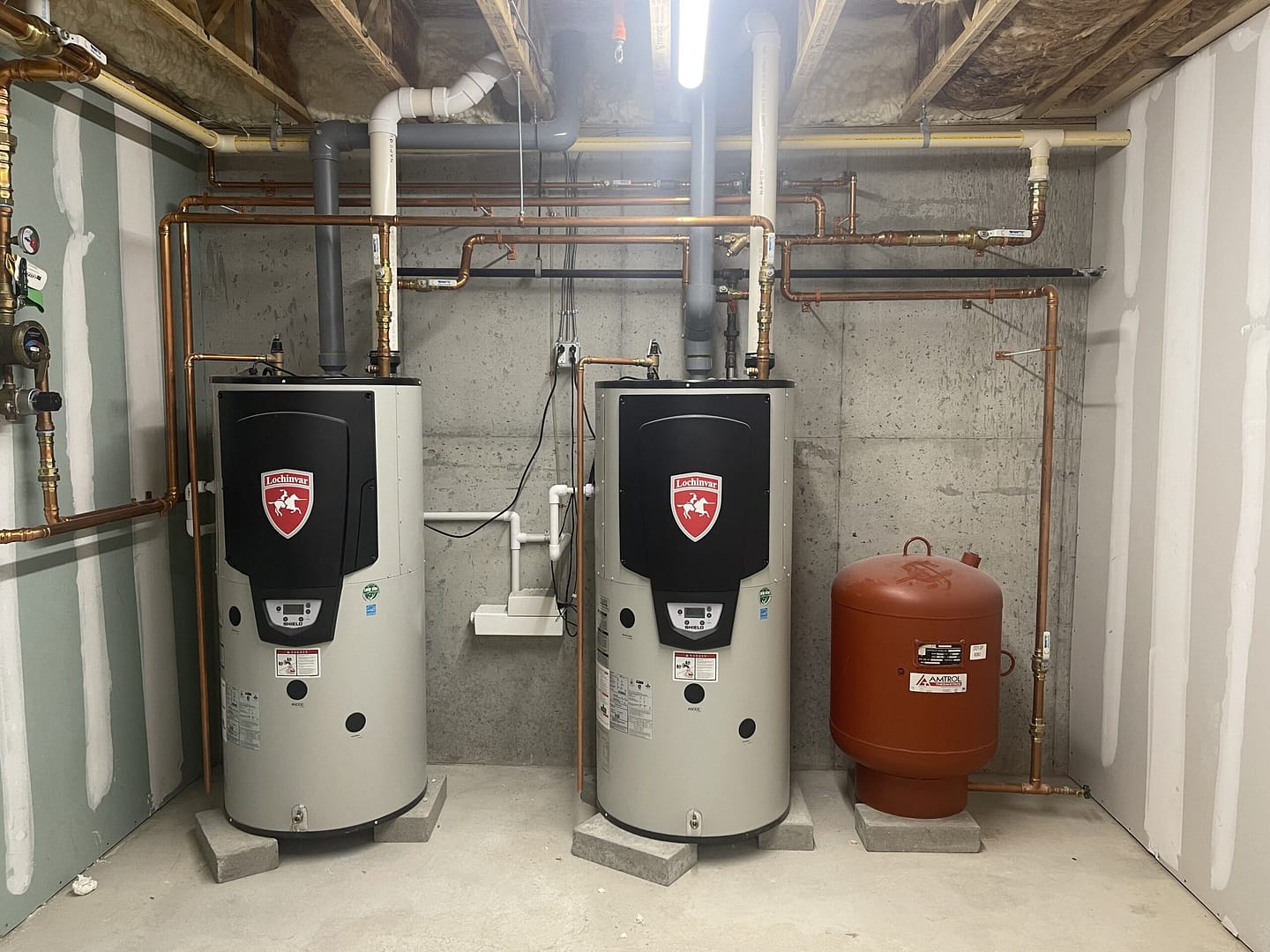You’re ready to relax after a long, hard day. You look put your fluffiest towels, coziest bathrobe, light some candles and start to run the bath while you find your book. Having retrieved it you re-enter the bathroom to discover, horror of horrors, there’s no hot water in the house.
It’s a nightmare situation but it can happen to anyone. Luckily, we’re here today with a guide to troubleshooting a hot water heater to ensure that when it does happen, you can fix it quickly and get back to your bath.
Understanding your Hot Water System
Troubleshooting your hot water heater is usually a fairly straightforward endeavor but before you can start working out why the hot water isn’t working, we’ll have to explain how the various systems work.
Types Of Water Heaters
There are a few different basic types of water heating systems in common usage and each works slightly differently. Some run on electricity whilst others heat the water by burning gas, some have tanks and others are totally tankless.
The steps for troubleshooting when you find there’s no hot water in the house depend on which fuel your system uses and which type of system you have installed in your home.
There are a baffling variety of makes and models out there but in basic terms:
Electric Water Heaters:
Electric water heaters work by passing electricity through a copper element which is traditionally submerged in your hot water tank. More recently, tankless electric heaters and combi-boilers have appeared on the market which, as the name suggests, don’t have a storage tank.
Gas Water heaters:
As you might expect, gas powered water heaters work by burning gas to heat your water. Again, these can either be tanked or tankless and come in a wide variety of makes and models. Of course, a gas-fired water heater still needs a source of ignition so it’s likely yours will also have an electricity supply to light the pilot light.
Identifying Your Water Heater
As the potential issues which have caused your hot water to go out vary between the types of heater, it’s important to narrow down which you have before proceeding.
While gas is more common, especially in the cities, with 1 in 4 homes in the US being fully electric, it’s worth making sure.
As a basic rule of thumb, if there’s a supply pipe going into the bottom of your water heater and a little window (where hopefully you’ll see a little blue flame), you’ve got a gas system. If you don’t see these things, chances are you’re fully electric.
If you have any doubts, it’s best to call in a qualified plumber. Both gas and electricity can be dangerous.
Troubleshooting: Initial Checks
When you find the hot water is not working, the tendency is to panic but most often, there’s a fairly simple straightforward fix that you can do yourself.
These all apply whatever your water heater runs on as even a gas heater will likely have an electric starter for the pilot-light.
Check The On/Off Switch
This may sound obvious but when you’re suddenly faced with having no hot water in the house, you can be forgiven for not thinking of the simplest solutions.
Before doing anything else, make sure that your water heater is actually switched on. You’d be surprised how often this is the problem.
Check The Fuse Box
The next thing to check when your hot water has gone out is the circuit breaker or fuse box. A small power surge may well have tripped the breaker or burnt out the fuse, resulting in a loss of power. These are usually a simple fix: either flip the switch to “on” again or replace the fuse.
If you find that this was the issue and it happens again, contact an electrician as it’s likely there’s something going wrong somewhere that needs attention.
Check the Power Supply
Of course, sometimes the problem is power related but won’t trip the breaker. You can do this with a circuit tester- simply touch it to the wire supplying power to your system and if it lights up and beeps, you have power.
If you have a multi-meter, you can get a more detailed diagnosis by testing voltage and resistance.
Check The Thermostat
If none of the above options have fixed your lack of hot water, it’s worth making sure that your thermostat control hasn’t been knocked to too low a temperature.
Common Issues and DIY Fixes
If none of your initial checks have identified and sorted your issue, your next steps depend on your heater type.
For Electric Water Heaters:
- High Temperature Reset: Some models may have a built in safety feature which cuts power when the system gets too hot. To reset this, open the control panel and press the button or turn the dial to “reset”.
- Test The Element: You can use a multi-meter to test your element for continuity. If you suspect your hot water tank’s element has burnt out or become corroded, replace it.
- Test The Thermostat: Again, if you have a multi-meter handy you can test your thermostat for continuity.
For Gas Water Heaters:
- Check The Pilot Light: The pilot light is the little blue flame that you should see when you peek through the window. If this has gone out, your heater won’t be able to fire up so try resetting it.
- Check The Gas Valve: Gas is piped in from either the main supply or an outside tank. As gas can be incredibly dangerous there will be a shut-off valve- and most likely more than one along the run of pipe. Check that these haven’t been accidently shut off. If you smell gas, shut off the supply and call a professional.
- Check The Thermocouple: Thermocouples are temperature sensing devices which allow gas to flow while the pilot light is lit. If you try to reset the pilot light and it lights then goes out again, you’ve probably got an issue with the Thermocouple. Use a multi-meter when both on and off to check for a continuous charge.
Tankless Systems
If you have a tankless system that isn’t producing hot water, the chances are that the control panel screen will be displaying an error code. These vary from manufacturer to manufacturer so it’s best to search online for what each means.
It’s also possible that lime-scale has built up in your system. You can descale it using water, white vinegar, a bucket and a connection hose. Remember to turn the gas off first!
Tanked Systems
Over time, sediment created from impurities in the water supply and internal corrosion will build up in a tanked system. This can be flushed out (and it’s a good idea to do this annually, even if you’re not experiencing problems).
- Turn off the system and water supply.
- Locate the drain valve and connect a garden hose.
- Turn on a hot water faucet.
- Open the drain valve and let the tank empty.
- Turn on the water supply.
- Leave it to run until the water coming from the hose runs clear.
- Refill the tank.
When To Call In The Pros
If you’re ever unsure of what you’re doing or what’s gone wrong, an experienced plumber is only ever a phone-call away.
If you suspect problems with the gas or electricity supply, it’s vital to allow a trained professional to take a look- neither power source is something for amateurs to mess with.
Likewise, if internal components need replacing, leave it to the pros. A DIY repair or replacement may invalidate your warranty and cause insurance issues down the line.
Preventative Maintenance
Of course, prevention is always better than a cure. There are a few simple tasks that you can undertake to help ensure that your water heater doesn’t stop working in the first place:
Monitor Pressure valves:
Too much pressure puts a strain on your system and will lead to issues sooner or later. Too little will affect efficiency.
Check The Anode Rod:
The anode rod is there to attract sediment and corrosive impurities away from the element. If it becomes overly incrusted they will build up on the element instead.
Flush The System Annually:
An annual flushing will help keep sediment levels down. If you opt to have a professional do this, they will be able to perform a safety check at the same time.
Temporary Solutions
Of course, any fix will require time, whether it’s waiting for parts or for a plumber to be available. In the meantime, boiling kettles will give you enough hot water to do the dishes before they build up too much and showering at the gym or a friend’s house is always an option.
In desperate circumstances a cold shower can be…bracing.
It’s often not until you find there’s no hot water in the house that you realize how much you’ve come to take it for granted, but with a bit of basic troubleshooting you can usually work out why it’s not working and put a fix in place.

